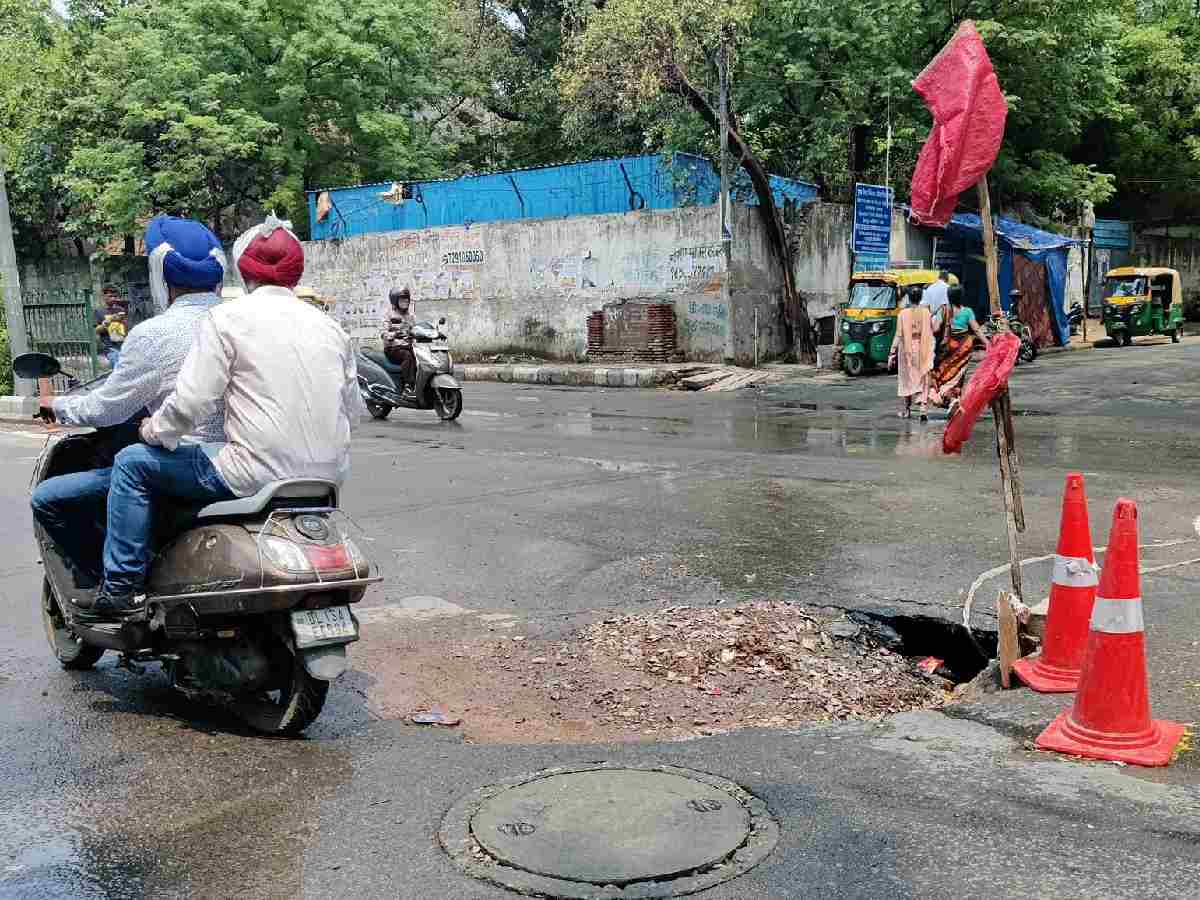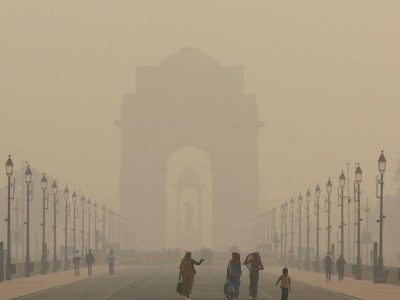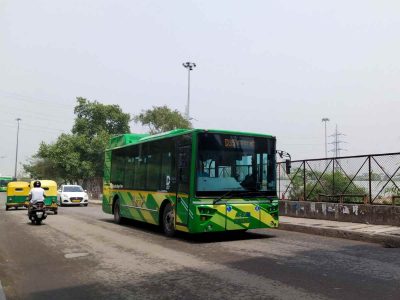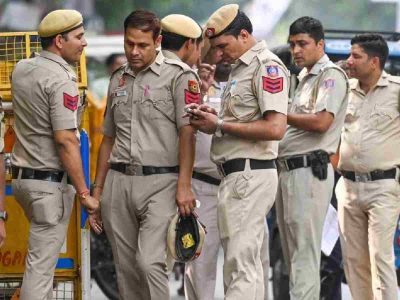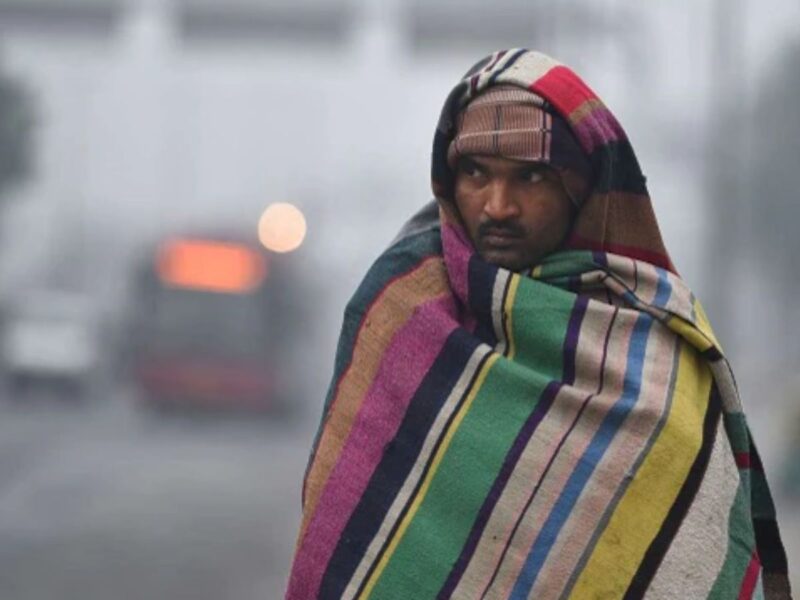Delhi’s roads, riddled with potholes and crumbling infrastructure, have become a growing menace, contributing to accidents, traffic chaos, and a rising death toll. Despite repeated pleas from the Delhi Traffic Police, the Public Works Department (PWD) has shown alarming indifference, leaving countless complaints unresolved and roads in disrepair.
The PWD had initially set a deadline of April-end to fix 7,600 potholes across the Capital. However, the deadline has now been pushed to the end of May, with the department having completed just over 52% of the work by May 7.
A surge in complaints, a stagnation in action
Between April 1 and 30, the PWD received 1,574 complaints about hazardous road conditions. Of these, 255 remain unresolved. These complaints mostly concern potholes, broken roads, waterlogged streets, and dilapidated footpaths—all under the PWD’s jurisdiction. However, resolution rates remain poor as the backlog grows.
In May alone, between 1 and 12, the PWD recorded 855 complaints, of which 503 remain pending. This means 58.83% of the complaints this month are yet to be addressed. Backlogs from previous months are also concerning: 107 complaints from March and 38 from February are still pending.
Broken footpaths, a recurring issue in complaints, force pedestrians onto roads, making them more vulnerable. Many of these problems are concentrated in West and North West Delhi, where residents have voiced concerns for years without redress. For instance, a complainant pointed to the deteriorating condition of Najafgarh Chowk, worsened by destructive digging by the Delhi Jal Board. Similarly, the road near the Mayapuri Flyover has reportedly been in poor shape for over a year.
Complainant Vaibhav Bansal stated that traffic jams have become routine due to the road’s condition. “During peak hour, traffic jams last for over two hours daily. It is mostly because of the broken roads, as it turns the speed of the vehicles into a crawl,” he said.
A separate complaint involving encroachment remains unresolved as well. An official associated with the case said PWD staff attempting to remove illegal shops were attacked. “We went there to remove the encroachments of shops and make-shift stores but they charged at us. Even the police did not budge to help us,” the official said.
A tragic case: The death of Rashid Khan
The cost of neglect was tragically illustrated on March 10, 2025, when 37-year-old motorcyclist Rashid Khan died in South Delhi’s Tigri area, near Hamdard Hospital on the Mehrauli-Badarpur road. According to police reports, Khan was found unconscious with a severe head injury after his motorcycle skidded on a six-inch-deep, waterlogged pothole. His helmet, found in his hand instead of on his head, offered no protection.
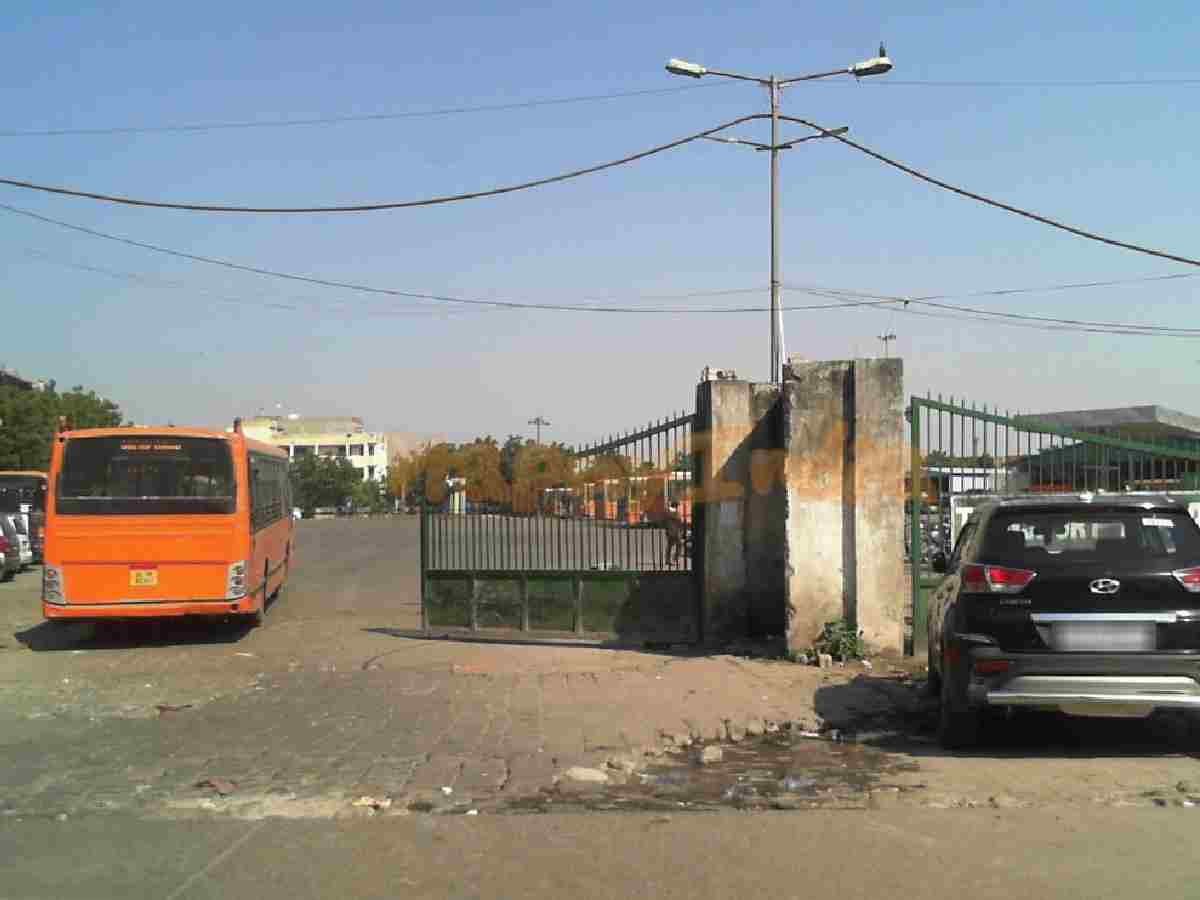
Witnesses said Khan lost control while navigating the pothole and fell fatally. Despite being rushed to AIIMS Trauma Centre, he was declared dead on arrival. Authorities are awaiting a post-mortem to determine if the cause of death was head trauma or possible drowning. They are also investigating if another vehicle was involved. A case has been registered for rash driving and causing death by negligence.
Delhi Traffic Police’s 2023 crash report: A grim reality
The consequences of poor road conditions are dire. According to Delhi Police, there was a 4.7% rise in fatal accidents in 2024, with 1,504 deaths compared to 1,432 in 2023. Both motorists and pedestrians are at increasing risk.
The Delhi Traffic Police’s 2023 crash report shows that pedestrians accounted for 43% of fatalities, followed by two-wheeler riders at 38%. The report identified 10 accident-prone “black spots,” including ISBT Kashmere Gate, Mukarba Chowk, Libaspur bus stand, and Burari Chowk. Ten roads—such as NH-8, Kanjhawala Road, and NH-24—each recorded 10 or more fatalities in 2023.
Also Read: Two-wheeler riders, cyclists remain most vulnerable on Delhi roads
Overspeeding, drunk driving, and disregard for traffic rules were flagged as leading causes of fatal crashes. Joint Commissioner of Police (Traffic) Kime Kaming said, “Our aim is to ensure commuters reach their destinations safely. Despite extensive awareness campaigns, many drivers remain heedless. You cannot force compliance on those unwilling to learn.”
Kaming highlighted that most fatal two-wheeler crashes involve riders without helmets. He also noted that drivers of larger vehicles often speed, drive under the influence, or ignore speed breakers. Pedestrians remain vulnerable to such behaviour. For car occupants, not wearing seatbelts is a major issue.
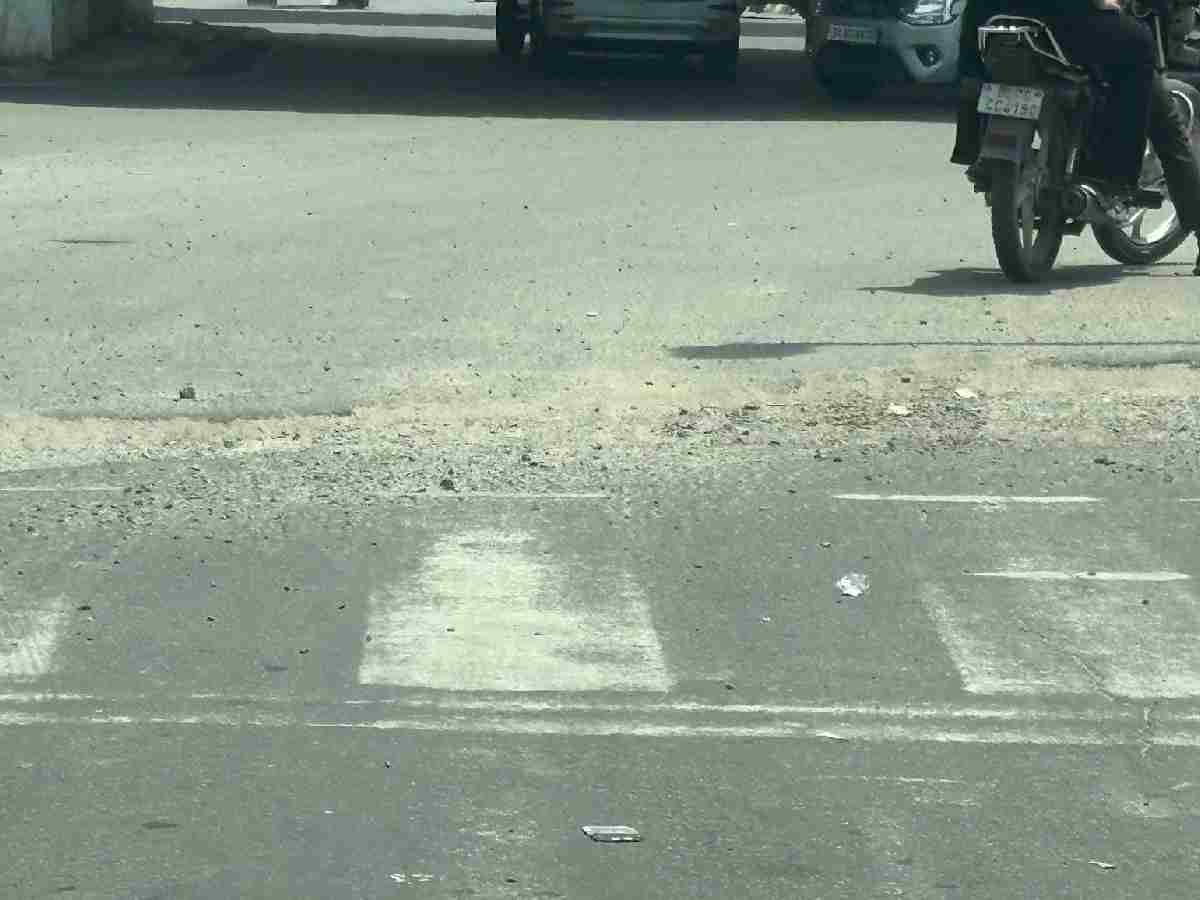
While Kaming acknowledged potholes as a factor, he said they were less significant than drunk driving or overspeeding. “Data and holistic studies confirm that pothole-related accidents are far fewer,” he said. Still, the growing complaint backlog suggests deteriorating road conditions are a rising concern.
Traffic Police pleas ignored
The Delhi Traffic Police have repeatedly highlighted dangerous road conditions, only to face bureaucratic inaction from the PWD. On March 20, they requested urgent repairs on Janakpuri District Centre Road, which remains unrepaired. A similar plea on March 19 to fix a footpath near Peeragarhi’s pillar 263 was ignored, as was a report on potholes at Peeragarhi Chowk.
Between February and May, 10 complaints from the Traffic Police remain unresolved. One such case involves an illegal passageway in Sarita Vihar that allows wrong-way traffic.
Officials believe the PWD acts only under direct orders from the government, often sidelining urgent Traffic Police requests. This delay increases risks for daily commuters.
Commuter frustration mounts
Residents across Delhi are growing frustrated. Arun Chadha, a daily commuter and complainant, criticised the PWD for compromising safety in its haste. “The PWD seems to be rushing roadwork, but in the process, they’re leaving behind uneven patches and unfinished sections. Roads are bumpy, with sudden height differences that pose serious risks, especially to two-wheelers. Just look at the Noida entry point in Mayur Vihar—it’s a clear example of how haste is compromising safety,” he said.
PWD’s belated response
The PWD Engineer in Chief declined to comment regarding the backlog in the complaints. Presently, the government department is trying to get the potholes fixed before the monsoon season.
On April 5, the PWD tested a new pothole repair technology called ECOFIX on Delhi Secretariat Road. Developed by CSIR-CRRI with startup Ramuka Global Services, the steel slag-based mix can fix dry and waterlogged potholes without dewatering. Roads can be reopened within 15–20 minutes, reducing commuter disruption.
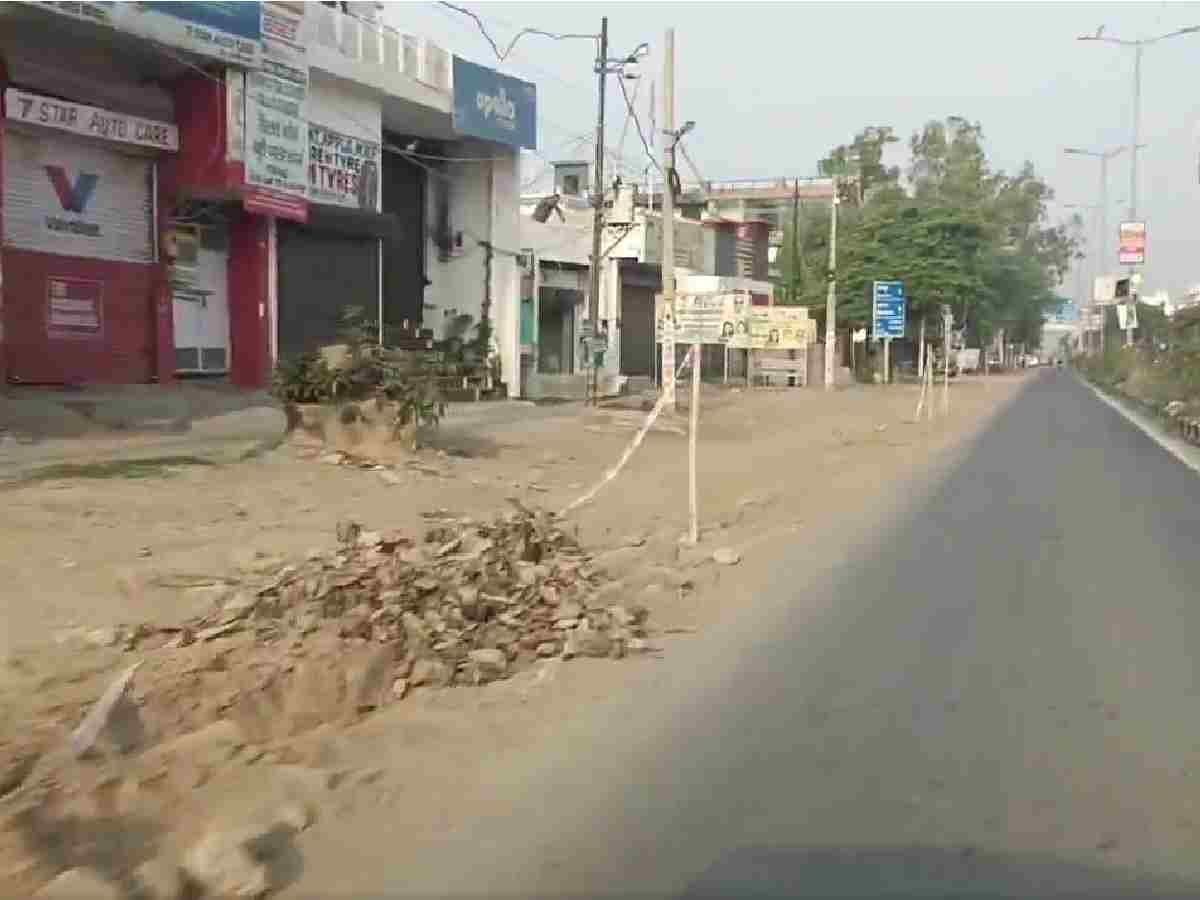
On March 20, 2025, the PWD ordered daily inspections of roads, footpaths, and encroachments by senior and field engineers. Disciplinary action was promised for non-compliance. Critics argue this move came too late. By April 23, only 50% (4,003 of 7,678) of the potholes had been repaired.
Most potholes were reported in the East Zone (3,213), followed by the North Zone (2,310) and South Zone (2,155). Though the deadline has been extended to May-end, it remains uncertain whether it will be met.
A city at risk
Delhi’s roads—marred by potholes, broken footpaths, and poor planning—pose an escalating threat to public safety. With a rising death toll and a paralysed response system, urgent reforms are needed. Unless swift, coordinated action is taken, the capital’s commuters will remain trapped in a daily battle against avoidable tragedy.

